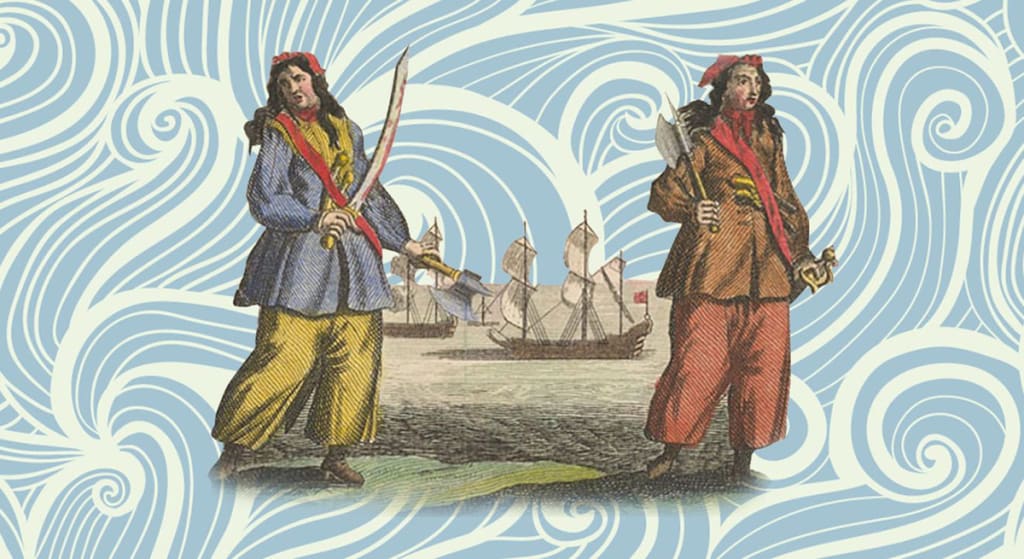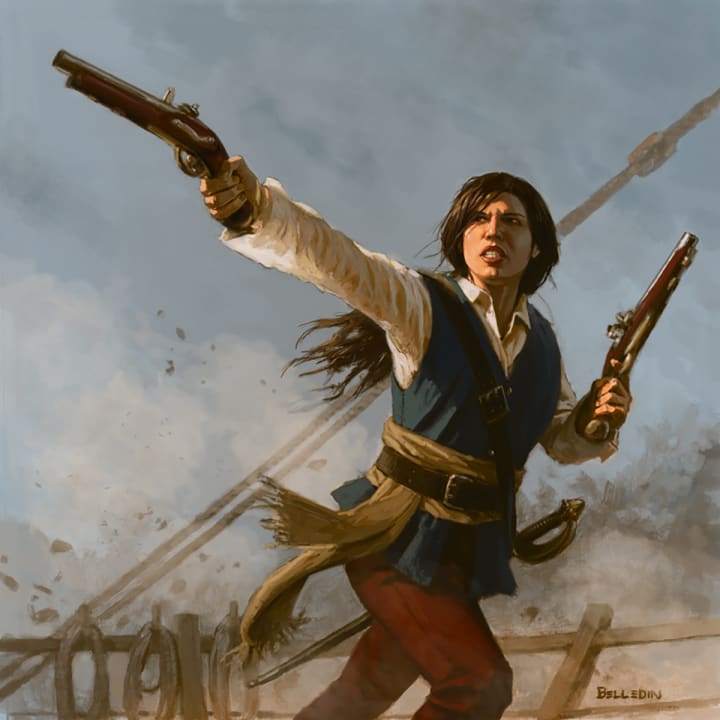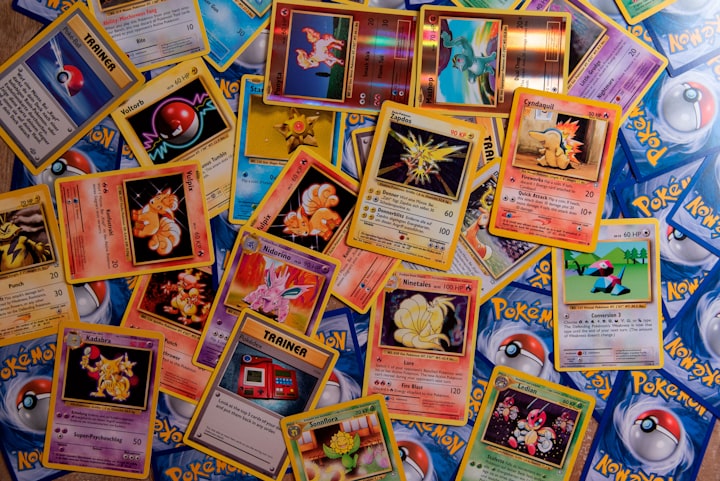The History of Anne Bonney and Mary Read
Savage pirates of the bounding main were Anne Bonney and Mary Read… and in that day, if you were a seafarer, you thought twice before setting sail with anything more valuable than library paste in the hold of your ship.

As closely as historians can determine, the story of Anne Bonney and Mary Read started in an English port town in the 1680s when a comely, "young and airy" sea wife gave birth to a robust baby girl. The mother's joy was marred by the somewhat glaring fact that her husband had been away at sea for more than two years. But she displayed a kind of ghoulish resourcefulness in dealing with the problem. Her legitimate baby son had recently died, and rather than report the death to kin, she dressed young Mary in the boy's clothes and hoped that no one would notice the deception.
At around the same time, an attorney of Cork, Ireland, was busy fathering a bastard daughter by his faithful serving maid (his wife had left him years before, for reasons not unrelated to this very event). With his legal practice to consider, the father dressed his daughter in boy's clothes and circulated the story that young Anne was the ''Son” of friends and would someday be apprenticed to him to learn the legal business.
Perhaps it was only coincidence: young girls of the 17th century with a past of forcible transvestism could very possibly have survived the "strain" and gone on to become wives or mothers or countesses or nuns. These two didn't. These two became pirates.
Savage pirates of the bounding main were Anne Bonney and Mary Read… and in that day, if you were a seafarer, you thought twice before setting sail with anything more valuable than library paste in the hold of your ship. Pirates meant business. They cut off your hands and feet. Sometimes they cut off your ears and nose, if they didn't like you. Or, they cut off your lips and broiled them in front of your eyes. And if they were of a merciful disposition, they then shot you in the head before leaving you for the flies. Pirates raped and they plundered, and their loyalty wasn't worth a brass farthing. They had scurvy, cholera, dysentery, rats, lice, maggots, and positively wretched manners. But Mary Read and Anne Bonney were the only two pirates history knows anything about who had breasts.
Puzzled historians have speculated that they were following some obscure internal "Robin Hood" code of ethics in their strange choice of career. This is not untrue. They stole from the rich, and they were their own favorite charity. It was also said that they joined ship in order to be with seafaring lovers, and this is also true. Both women were devoutly heterosexual, and, in fact, had no disposition whatever for remaining chaste. In the end, however, their motivations were no more complex than this: they were partial to blood.
Mary Read

In actuality, Mary Read's childhood was not in the least unhappy. She never missed the trappings of little-girlhood. Military life fascinated her. At an undetermined but tender age, she left home and joined on as a "footboy" on a warship, then graduated to the rank of cadet in a land regiment. All accounts profess that she behaved herself with a great deal of bravery. No human enemy ever got the better of her, but biology did: during a period of exemplary service with the English cavalry, Read's superiors began to notice that her behavior was somewhat erratic, and it was feared that she was going insane. In fact, she was not insane at all. She was in love with one of her messmates in the regiment. She finally gathered the courage to inform the fellow to his face, hastily proving the truth of her gender, and fortune, for a while, smiled on both of them. They became engaged. The officers of the regiment were entranced with the idea of two troopers marrying each other and "made a great noise," pooling their funds so that the two lovers could have a sound future—as tavern keepers—together. Mary even took the plunge and dressed in women's clothes for the ceremony.
We'll never know how domestic life would have suited her. Her husband died soon after the marriage. Even more irksome to Mary was the fact that she could no longer follow her chosen profession of soldier, because, for some unfathomable reason, there weren't any wars going on. Luckily for Mary, in those days the option of buccaneering loomed tantalizingly in front of any able-bodied young soul with a purse to fill and a good hand at the cutlass. There were actually two kinds of pirates: the ones who made a lot of money, and the ones who made great, filthy, heaping gobs of it. The ones who made heaping gobs—the privateers—worked for the English government. It was their job to patrol the seas: to see who was copping the most plunder in the New World, and to generally make life hell for the Spanish—which usually amounted to the same thing. Sometime between 1700 and 1720, Mary signed on with the crew of Captain John "Calico Jack" Rackham, who had a very tidy little privateering racket going. She'd finally found her niche. And it was aboard Rackham's ship that Read was to meet her great friend and cobuccaneer, Anne Bonney.
Anne Bonney

By the time Anne Bonney was twelve years old, her fits of passion were already somewhat legendary. "Someone" handy with a knife had dispensed with a servant girl after the girl and Anne had quarreled; Anne's alibi remained suspiciously thin. It is fact that when a local youth tried to force her maidenhood, she pounded his head into a bloody mess. Her shiftless temperament took her to the Carolinas and the West Indies. She married, left her husband, who "wasn't worth a groat anyway," and bounced about the West Indies for a time "seeking her fortune," dressed as a man all the while. Well, almost all. She bore a child in Cuba. The father of the child was the very same Calico Jack Rackham. Having little interest in maternity, Bonney reassumed her masculine guise and ran away with him to sea.
By the time Mary Read signed on with Calico Jack's crew, Anne Bonney was already a hardened seafarer, with a hopeless passion for men. Bonney took one look at the strapping new crew member and made a pass at him. It was all right, Bonney assured Read, because, what luck—Bonney was a woman!
"A woman, eh?" said Read, because boy, did she have a surprise for Bonney.
The two became fast friends, after quickly briefing poor jealous Calico Jack, who had threatened to cut Bonney's new companion's throat.
It seems incredible, but Calico Jack's crew never caught on to the masquerade. In fact, they were a pack of lily-livers when up against Read and Bonney's fighting style. Any kind of cowardice sent Mary Read into a towering rage. Whenever her ship was boarded, and the crew refused to come up on deck and fight, she'd fire her own pistols down into the hold to galvanize them into action. Fairly frequently, she'd kill one or two of them, but she thought it a small price to pay, Jack Rackham used to marvel that none amongst his crew "were more resolute, or ready to board or undertake any thing that was hazardous," than Mary Read and Anne Bonney. If it ever happened—and apparently it often did—that either woman grew to fancy a crew member in that sort of way, she would come swooping down during skirimishes, sparing the object of her affection the dicey, messy task of having to save his own life. She would fight duels for him, if need be. In only one instance was Mary Read unable to control herself; she confided her gender to one such object of affection by (as he later confessed) “carelessly shewing her breasts, which were very white.”
Read and Bonney were incontrovertibly good at being pirates, although we must reserve the judgment that they were great pirates. Great pirates, like great con artists, don't get caught. Read and Bonney did. When piracy crackdowns finally came about in the 1720s, and Rackham's crew was captured and brought to trial, all defendants were requested to step forward and give reason why the sentence of death should not be passed upon them.
"My Lord," said Read and Bonney, in what amounted to one of the most surprising sexual trump cards ever played, "we plead our bellies." And the court of the day was powerless, faced with the fact that two of the fiercest sea dogs ever captured and brought to justice were each four months pregnant. They had Calico Jack, bless his heart, to thank for that, but he was hanged anyway.
About the Creator
Frank White
New Yorker in his forties. His counsel is sought by many, offered to few. Traveled the world in search of answers, but found more questions.






Comments
There are no comments for this story
Be the first to respond and start the conversation.